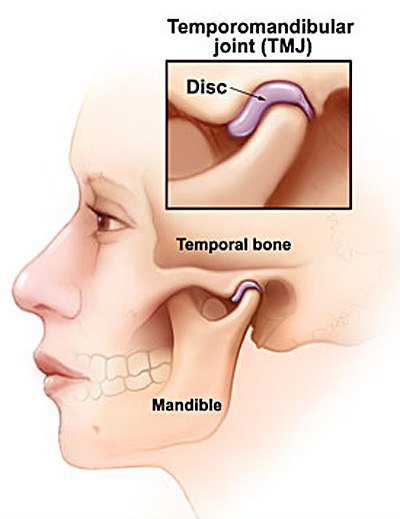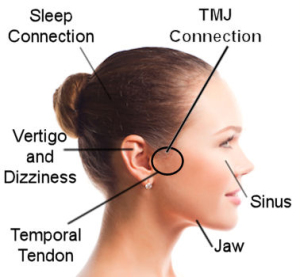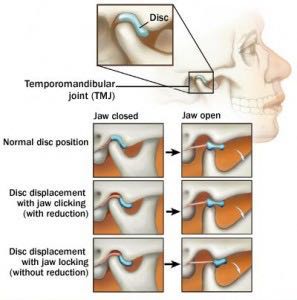Jaw Joint Disorders

Many people suffer from chronic facial and neck pain as well as headaches. In some cases this pain can be due to a problem associated with the jaw joint called the Temporomandibular joint and this disorder is referred to as Temporomandibular Joint Dysfunction Syndrome (TMD).
The Temporomandibular joint get used a lot while speaking, chewing, and yawning. Pain around these joints can be unpleasant and may even restrict movement.
Symptoms of TMD include:
- Pain in the jaw area during movement
- Feeling of stuffiness in the ears causing pain or tinnitus (ringing in the ears)
- Frequent headaches or neck aches
- Clicking or popping sound when the jaw moves
- Facial swelling near the joint
- Spasm of muscles while opening and closing of the jaw
- A change in the bite of the teeth
- Restricted opening of mouth or inability to close the mouth (Lock jaw)

Your teeth, jaw, and surrounding muscles are all designed to work in harmony, and your teeth should all come together simultaneously. When teeth are missing or out of alignment the jaw is forced to shift position, and the muscles have to work harder than they should to bring the teeth together.

The constant strain on the muscles can also pull the disc that cushions the jaw joint out of position. If this happens, the bones of the jaw joint can rub against each other, not only causing pain but also damaging the joint.
There’s a lot of debate about what causes TMD. We may ask you about some suspected causes when we take your medical history. For example, grinding teeth while awake or asleep, trauma such as a car crash or fall, emotional stress, or your teeth being out of alignment, could be contributing factors.
TMD is Treatable
Fortunately, TMD is treatable. First we’ll analyse your bite using advanced equipment to identify any problems. Then we may have you wear a custom-crafted orthotic for the next several months to relax the muscles, restore balance to the jaw joint, and stabilize the bite. Once we have stabilized your bite, we can permanently correct it.
Depending on your situation, we may replace missing teeth, move teeth with orthodontic treatment, or place crowns and veneers on some or all of the teeth. Millions of people suffer from TMD, but with treatment, we restore harmony to the teeth, muscles, and jaw joint, and get you out of pain.
To maintain a healthy jaw joint follow these tips:
- Relax your face, avoid clenching your teeth, especially when you are stressed
- Avoid grinding your teeth – if you grind while sleeping, get a NIGHT GUARD
- Avoid chewing gum constantly
- Do not strain your neck while on the phone by cradling it against your head and shoulder
- Chew food evenly on both sides of your mouth
- Practice good posture – keep your head up, back straight, and shoulders squared
